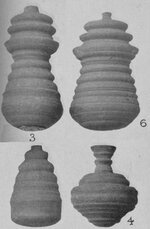nunyabiz111
Full Member
- Jun 15, 2018
- 128
- 128
- Primary Interest:
- All Treasure Hunting
Large "mallet" stone with apparent multiple hafting grooves - input appreciated
Found it propped up in a shallow stream in northwest New Brunswick - most of my research up until now seems to suggest that multiple-grooved hafting stones of any type/use are typically uncommon or even unheard of by certain accounts. Maybe it's meant to lay on its flat face and function as an abrader? Any chance it could simply be natural?
front: https://imgur.com/a/XHx17zl
front 2: https://imgur.com/a/pUGuJeg
back: https://imgur.com/a/aNtq2jl
Thank you for any thoughts or interpretations you may have!
Found it propped up in a shallow stream in northwest New Brunswick - most of my research up until now seems to suggest that multiple-grooved hafting stones of any type/use are typically uncommon or even unheard of by certain accounts. Maybe it's meant to lay on its flat face and function as an abrader? Any chance it could simply be natural?
front: https://imgur.com/a/XHx17zl
front 2: https://imgur.com/a/pUGuJeg
back: https://imgur.com/a/aNtq2jl
Thank you for any thoughts or interpretations you may have!





